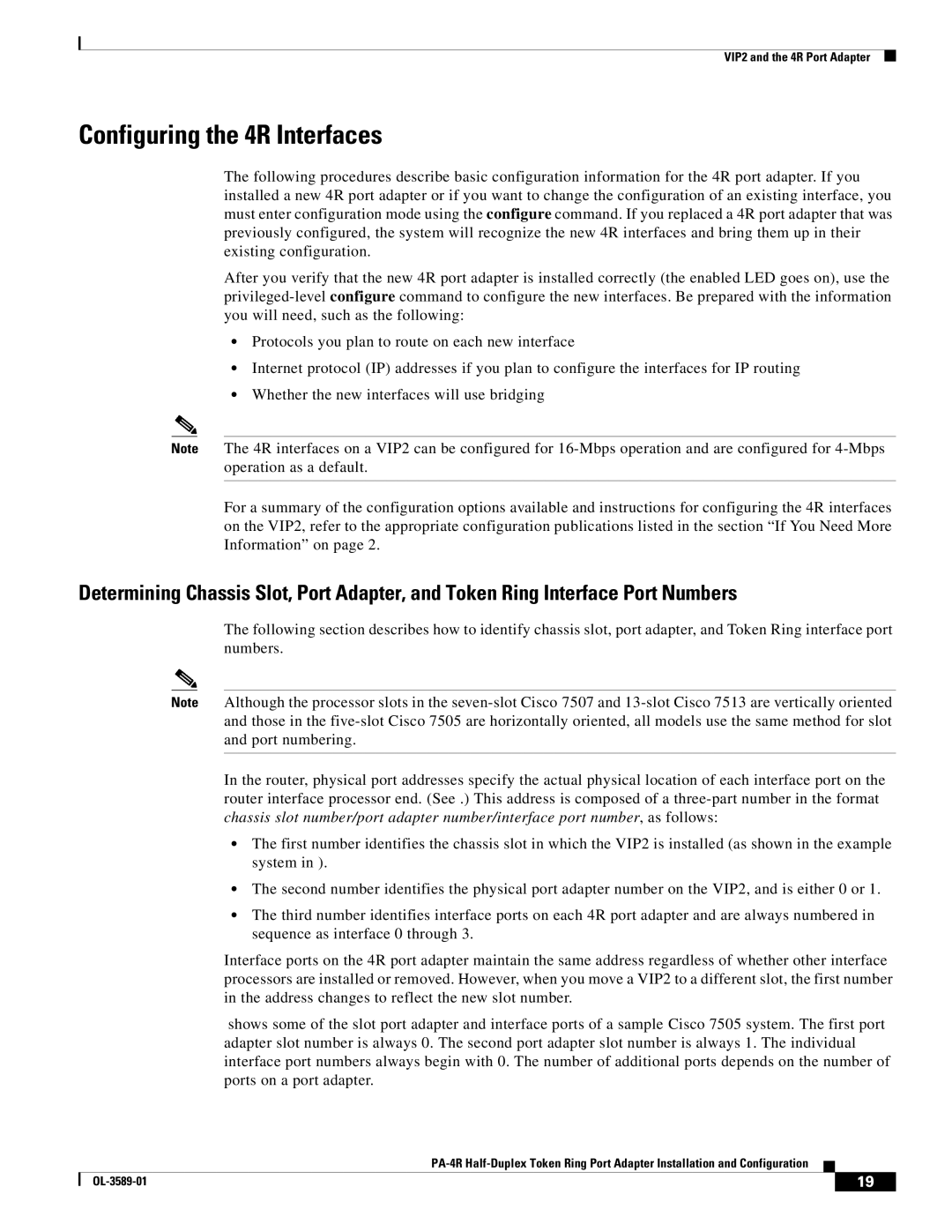
VIP2 and the 4R Port Adapter
Configuring the 4R Interfaces
The following procedures describe basic configuration information for the 4R port adapter. If you installed a new 4R port adapter or if you want to change the configuration of an existing interface, you must enter configuration mode using the configure command. If you replaced a 4R port adapter that was previously configured, the system will recognize the new 4R interfaces and bring them up in their existing configuration.
After you verify that the new 4R port adapter is installed correctly (the enabled LED goes on), use the
•Protocols you plan to route on each new interface
•Internet protocol (IP) addresses if you plan to configure the interfaces for IP routing
•Whether the new interfaces will use bridging
Note The 4R interfaces on a VIP2 can be configured for
For a summary of the configuration options available and instructions for configuring the 4R interfaces on the VIP2, refer to the appropriate configuration publications listed in the section “If You Need More Information” on page 2.
Determining Chassis Slot, Port Adapter, and Token Ring Interface Port Numbers
The following section describes how to identify chassis slot, port adapter, and Token Ring interface port numbers.
Note Although the processor slots in the
In the router, physical port addresses specify the actual physical location of each interface port on the router interface processor end. (See .) This address is composed of a
•The first number identifies the chassis slot in which the VIP2 is installed (as shown in the example system in ).
•The second number identifies the physical port adapter number on the VIP2, and is either 0 or 1.
•The third number identifies interface ports on each 4R port adapter and are always numbered in sequence as interface 0 through 3.
Interface ports on the 4R port adapter maintain the same address regardless of whether other interface processors are installed or removed. However, when you move a VIP2 to a different slot, the first number in the address changes to reflect the new slot number.
shows some of the slot port adapter and interface ports of a sample Cisco 7505 system. The first port adapter slot number is always 0. The second port adapter slot number is always 1. The individual interface port numbers always begin with 0. The number of additional ports depends on the number of ports on a port adapter.
| 19 |
| |
|
|
